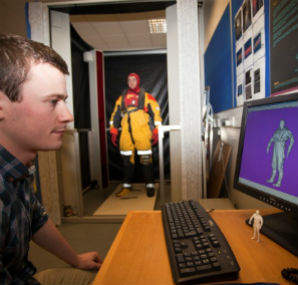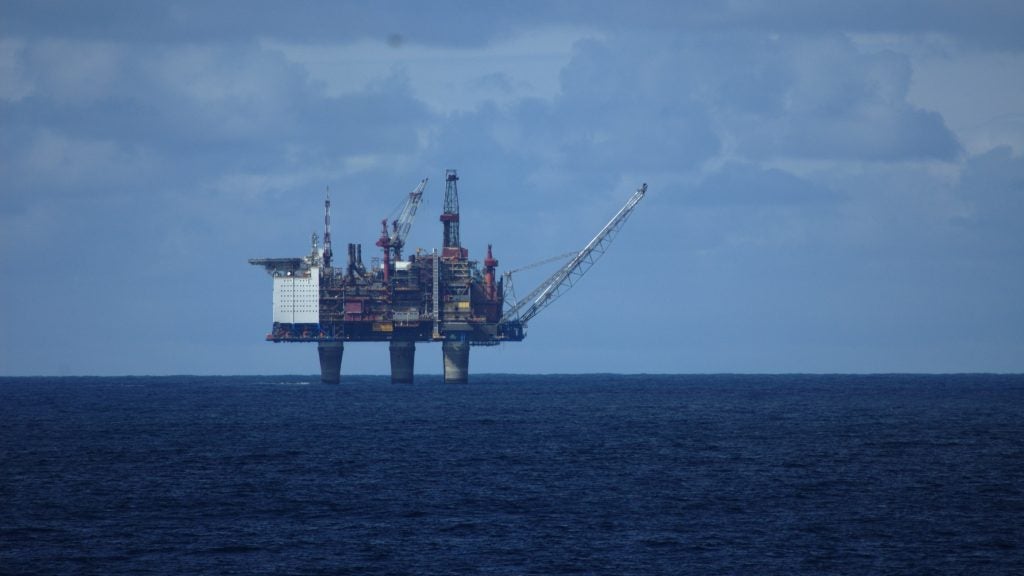

In a compelling speech delivered on 26 August at an Oil and Gas UK breakfast briefing in Aberdeen, UK, Sodexo managing director Ian Russell outlined in stark terms the physical and mental stresses placed upon the 61,892 UK oil and gas workers who travelled and worked offshore in 2013.
They include crowded and unnatural working conditions, a psychologically demanding environment with the ever present risk of accidents, stringent security rules, 12-hour working days – sometimes for 14 days in succession – and prolonged periods away from family and friends.
One of the most salient aspects of this high-pressure working environment is excessive weight gain among offshore personnel. In its latest annual health and safety report, Oil & Gas UK noted that the weight of a typical man employed on North Sea installations has increased to over 14 stone, and that the average weight of men working in the offshore oil and gas industry rose by 20% between 1985 and 2014.
The health and well-being of an expanding workforce – the number of employees travelling offshore grew by 8.6% in 2013 compared with the previous year – is the subject of a two-year study by Robert Gordon University (RGU), which employs 3D scanners to measure the size and shape of offshore workers. Speaking at the aforementioned business breakfast, Dr Arthur Stewart, knowledge exchange officer at RGU’s Institute of Health and Wellbeing Research, summed up the trend.
“The burgeoning disease burden that we have to work with is a combination of the interaction of inactivity and weight gain as well as some genetic antecedents,” he told the audience at the event entitled ‘Recipe for a healthy workforce.’ “We are dealing with a much greater risk of ill-health offshore nowadays than an accident offshore, certainly in terms of medical evacuations.”
How well do you really know your competitors?
Access the most comprehensive Company Profiles on the market, powered by GlobalData. Save hours of research. Gain competitive edge.

Thank you!
Your download email will arrive shortly
Not ready to buy yet? Download a free sample
We are confident about the unique quality of our Company Profiles. However, we want you to make the most beneficial decision for your business, so we offer a free sample that you can download by submitting the below form
By GlobalDataVital stats: health and well-being statistics among offshore workers
The statistics related to the health of UK offshore workers make for sobering reading. Research by Sodexo found that 64% of offshore workers are either ‘overweight’ or ‘obese’, 34% drink more than the recommended UK Government limit, 32% are smokers and 34% are behaviourally detached.
The pilot study also noted that 30% of the offshore workers surveyed were dissatisfied with their material and physical well-being, while 34% were dissatisfied with their health. As the leading UK offshore industry association, Oil & Gas UK recognises the importance of providing occupational health services, employee assistance programmes and on-site medical support provision to assist personnel in difficulty. On the issue of rising obesity, Oil & Gas UK is collaborating with Step Change in Safety to raise awareness of the problem, as the organisation’s health and safety director Robert Paterson explains.
“The data indicating that the average weight of offshore workers is rising reflects the general trend within society at large, where lifestyles tend to be more sedentary than in the past and diets may be characterised by high energy density food,” he says. “Oil & Gas UK organised the health and well-being breakfast briefing to help raise awareness of this as an issue requiring further attention.”
Paterson is quick to point out that success depends on a combination of industry-wide health and well-being initiatives and an embedded culture of personal responsibility among offshore workers. “Adopting a long-term strategic approach to employee health and well-being is key to ensuring that people and organisations thrive,” he says. “The process is very much two-way: employers need to embrace the opportunity to enhance the well-being of employees within their existing business processes and objectives and recognise the associated business benefits.
“Employees too have a key role but must accept that a significant part of achieving a healthy lifestyle is under their own control.”
The issue will also fuel growing concern over the safety implications of transporting larger workers by helicopter in the wake of the Civil Aviation Authority ruling that oil workers unable to get through aircraft emergency windows while wearing survival suits would not be allowed to board helicopters. At present, it is estimated that 25% of helicopter windows are suitable for Extra Broad (XBR) passengers.
Improved mathematical modelling and analysis is beginning to overcome many of the shortcomings of weather prediction.
“It is natural that the offshore workforce has been concerned about the body size and compatibility with push-out window emergency exit size; we recognise that this is a legitimate concern,” Paterson says. “These criteria come in response to the size restrictions laid out by the CAA in February 2014.
“Step Change in Safety is working closely with the CAA on the guidance for the safe exit from aircraft emergency windows. In October 2014, Step Change in Safety announced that helicopter passengers with a shoulder width of 22in or more will be classed as XBR and will be required to sit in seats near windows with a diagonal measurement of at least 22in.
“The Step Change in Safety Passenger Size workgroup, which was formed in response to the CAA report, is working closely with the CAA and other companies to work out how, when and where helicopter passengers will be measured,” he adds.
Healthy profits: Total E&P UK and the Well Track programme
Total E&P UK is one of several operators to adopt a proactive approach to the issue of long-term employee worker health and well-being through multiple company-wide health campaigns.
“Total has always promoted healthy lifestyles and choices through a variety of initiatives and interventions,” says David Hainsworth, Total E&P UK’s director of safety, heath, environment, quality and Integrity and a keynote speaker at the Oil & Gas UK business breakfast in August. “It is great to see that the workforce as a whole now recognises the challenges and are taking action directly.
“For example, Total’s Alwyn platform’s Welfare Committee recognised the importance of personal health and wellbeing. They organised a ‘biggest loser’ competition with prizes for those with the biggest weight loss. The competition helped illustrate the risks of obesity, whilst encouraging and motivating those involved to take part in activities to promote healthy living.”
“A number of personnel working onboard Alwyn lost weight as a result. The initiative started in 2013 with 40 contestants. Loss was measured in body fat rather than weight. The individual winner was Gary Cramb, whose body fat percentage went from 21% to 10%.”
“More importantly there has been wide buy-in from Alwyn crew. As such there is demand to run the competition again this year. Total is also inviting its other offshore installations and other parts of its business to participate in the future.”
For its part, Sodexo has introduced Well Track, a holistic, incentives-based programme that rewards offshore workers for getting and staying in shape at work and on leave, both physically and mentally. In addition to regular physiological and psychological assessments to measure progress and ongoing remote communication from a team of coaches, nutritionists, and health and wellness experts, Well Track also offers advice covering psychosocial counselling, physical wellbeing and health support.
A weighty issue: making employee health and well-being a priority
As offshore operators enter ever more extreme environments in search of dwindling hydrocarbon reserves, so the offshore environment is set to become increasingly demanding, both physically and psychologically, for employees working at the business end of the oil and gas E&P industry.
“Health and safety is an important part of any industry, but particularly so in the offshore sector, which is classed as a major hazards industry,” says Robert Paterson. “Oil & Gas UK’s remit is to work with the industry to reduce the number of dangerous occurrences and prevent workforce injuries and ill health.
“In terms of promoting employee well-being, Oil & Gas UK has an active occupational health network through which member companies share and communicate on health- related matters. The industry recognises the importance of joined-up working and engages the workforce and trade unions through offshore safety committees and onshore networks.”
For David Hainsworth, the issue of long-term health and well-being is not just pertinent to onshore and offshore employees, and other industry sectors, but also to society as a whole.
“The UK faces a new health challenge. It used to be infectious diseases that posed the main threat to health,” he says. “Today the challenge is long-term conditions caused by poor lifestyle, such as diabetes. The energy industry workforce faces the same challenge.”
Follow Julian Turner on Google+


.gif)


